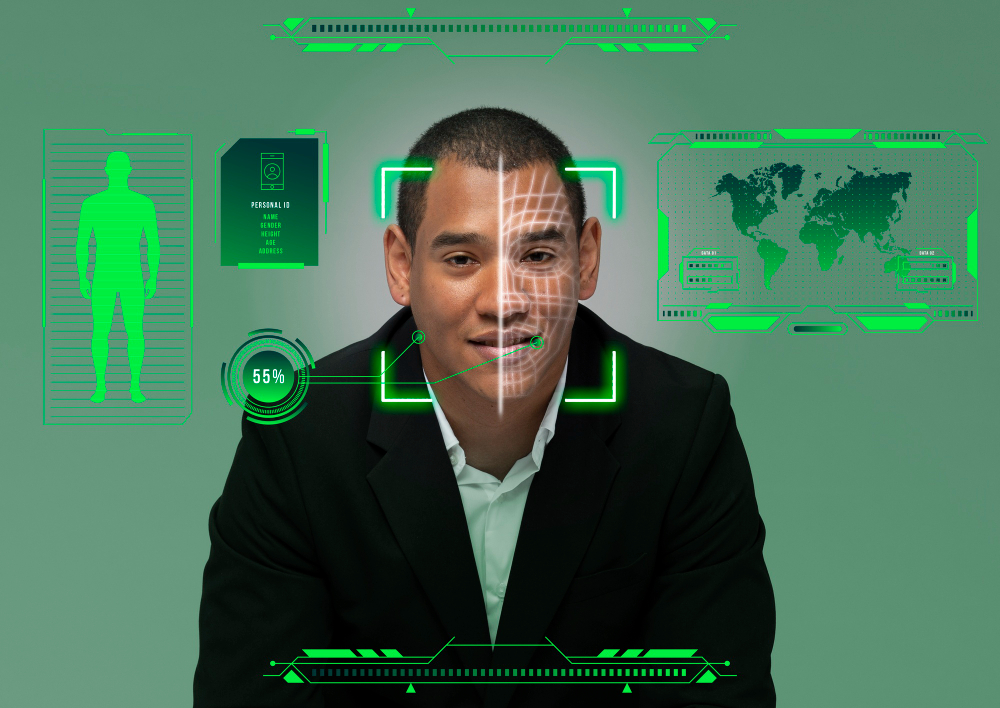Revolutionizing Industries with Computer Vision Services: A Comprehensive Guide

Strong 8k brings an ultra-HD IPTV experience to your living room and your pocket.
In today’s digital world, artificial intelligence (AI) is transforming businesses, and one of the most impactful branches of AI is computer vision. With the ability to interpret, process, and analyze visual data, computer vision opens the door to unprecedented automation, efficiency, and accuracy. From healthcare and retail to automotive and security, computer vision services are revolutionizing how industries operate. These services allow businesses to integrate custom AI solutions for tasks like object recognition, facial detection, and image segmentation, making them indispensable in the modern tech landscape.
In this article, we’ll explore what computer vision is, the industries benefiting from it, the advantages of using computer vision services, challenges in implementation, and how to get started with these services.
Table of Contents
What is Computer Vision?
Applications of Computer Vision Services Across Industries
Key Benefits of Using Computer Vision Services
Challenges in Implementing Computer Vision Services
How to Get Started with Computer Vision Services
FAQs
1. What is Computer Vision?
Computer vision is a field of artificial intelligence that enables machines to “see” and interpret visual information in images and videos, much like the human brain processes visual stimuli. It relies on deep learning, machine learning, and neural networks to teach computers how to recognize patterns, detect objects, and extract meaningful insights from visual data.
The most common applications of computer vision include object detection, facial recognition, image classification, and visual search. Businesses across many industries are now leveraging computer vision services to automate manual tasks, reduce errors, and provide real-time insights that drive decision-making.
2. Applications of Computer Vision Services Across Industries
The versatility of computer vision makes it useful across a wide range of industries. Here’s how different sectors are utilizing computer vision services to streamline processes, reduce costs, and improve efficiency:
a. Healthcare
In healthcare, computer vision is making a significant impact by enhancing diagnostics, improving medical imaging, and even assisting in surgeries. AI-powered systems can analyze images from X-rays, MRIs, and CT scans to detect anomalies like tumors, fractures, or infections more accurately and faster than human experts.
For instance, computer vision services are being used to detect early signs of diseases such as skin cancer by analyzing digital images of skin lesions. This allows for early diagnosis and treatment, ultimately saving lives.
b. Retail
The retail industry uses computer vision to understand customer behavior, manage inventory, and optimize store layouts. In physical stores, AI-driven cameras can track customer movements, analyze which products attract the most attention, and identify purchasing patterns. This data can help retailers make more informed decisions about stock placements and promotions.
Additionally, cashier-less checkout systems powered by computer vision services are now being implemented, allowing customers to simply pick up items and walk out, with payment processed automatically.
c. Manufacturing
Manufacturing companies are leveraging computer vision services to improve quality control, enhance predictive maintenance, and automate defect detection. For instance, cameras equipped with AI can monitor production lines, identifying defective products in real-time and reducing waste. This technology ensures that only high-quality products reach consumers while minimizing manual inspection costs.
Computer vision also enables predictive maintenance by monitoring the health of machinery, detecting wear and tear, and notifying operators before equipment failure occurs.
d. Agriculture
In agriculture, computer vision is being used for precision farming. Drones and sensors equipped with AI-powered cameras can monitor the health of crops, assess soil quality, and detect pests. This helps farmers make better decisions about irrigation, fertilization, and pest control, improving yields and reducing costs.
For example, farmers can use computer vision services to analyze drone footage and detect areas of their fields that require more attention, such as sections with poor crop health or pest infestations.
e. Security and Surveillance
Security and surveillance are among the most common applications of computer vision. From facial recognition at airports to license plate recognition for traffic control, AI-driven systems are enhancing public safety. Computer vision services can automatically detect and track objects or individuals in real-time video feeds, helping to identify potential threats or suspicious behavior.
3. Key Benefits of Using Computer Vision Services
Implementing computer vision services offers numerous benefits that can help businesses in any industry improve their operations. Here are some of the key advantages:
a. Automation and Efficiency
Computer vision automates time-consuming tasks such as visual inspection, pattern recognition, and data analysis. By replacing manual processes with AI-driven systems, businesses can improve efficiency, reduce human error, and increase productivity.
For example, in a factory setting, computer vision can inspect thousands of products in minutes, something that would take human inspectors much longer to achieve with higher chances of error.
b. Improved Accuracy
AI systems are capable of analyzing vast amounts of visual data with a high level of accuracy. Whether it’s diagnosing medical conditions, detecting product defects, or identifying individuals in security footage, computer vision consistently delivers more reliable results compared to human capabilities.
c. Real-Time Insights
One of the major advantages of using computer vision services is the ability to obtain real-time insights. By analyzing video or image feeds in real-time, businesses can react quickly to emerging trends, issues, or opportunities. In retail, for example, this can lead to better customer service and personalized shopping experiences.
d. Cost Savings
While there may be an upfront investment in developing and implementing computer vision solutions, the long-term savings can be substantial. Automation reduces the need for labor-intensive tasks, cuts down on human error, and ensures higher quality products or services, leading to lower operational costs.
e. Scalability
Computer vision services can be easily scaled to meet the growing needs of your business. Whether you’re starting with a single application or implementing the technology across multiple departments, AI-driven systems can be expanded as your business evolves.
4. Challenges in Implementing Computer Vision Services
While computer vision offers a wealth of opportunities, businesses may face some challenges when implementing these services:
a. Data Privacy and Security
Computer vision systems often handle sensitive data, particularly in industries like healthcare and security. Ensuring that these systems comply with data privacy regulations, such as GDPR, is critical. Implementing encryption and secure data storage can help protect personal information from being compromised.
b. Cost of Development
Developing custom computer vision solutions can be expensive, particularly for small businesses. The complexity of creating AI algorithms, integrating them into existing systems, and maintaining the software may require significant investment. However, the long-term benefits usually outweigh these initial costs.
c. Integration with Existing Systems
Integrating computer vision services into existing IT infrastructures can be challenging, especially for businesses that rely on legacy systems. Ensuring that the new AI-driven systems work seamlessly with your existing platforms is critical to achieving maximum efficiency.
d. Limited Availability of High-Quality Data
AI models require large datasets for training. In some cases, businesses may not have enough high-quality data to build an accurate model. Partnering with experts in computer vision services can help overcome this limitation by developing data augmentation strategies or using synthetic data.
5. How to Get Started with Computer Vision Services
If you’re considering implementing computer vision services for your business, here’s a step-by-step guide to getting started:
a. Identify Business Challenges
Start by identifying specific challenges or tasks that computer vision can address. Whether it’s automating quality control, enhancing security, or improving customer experience, having a clear goal in mind will help guide your project.
b. Consult with Experts
Reach out to companies that specialize in computer vision services. They can help you assess your needs, recommend the right technology stack, and create a roadmap for development and implementation.
c. Start Small with a Pilot Project
Before rolling out a full-scale solution, consider starting with a pilot project. This allows you to test the technology on a smaller scale and make adjustments based on the results.
d. Measure Success
After implementing computer vision services, monitor key performance indicators (KPIs) to measure the success of the system. This could include improvements in efficiency, cost savings, or customer satisfaction.
e. Scale and Expand
Once your pilot project proves successful, you can scale the solution to cover more areas of your business. Whether expanding to other departments or adding new functionalities, computer vision services can grow with your business needs.
FAQs
a. What industries benefit the most from computer vision services?
Industries like healthcare, retail, manufacturing, agriculture, and security benefit significantly from computer vision. It helps automate tasks, improve accuracy, and offer real-time insights that enhance decision-making.
b. How do computer vision services improve business operations?
Computer vision automates visual data processing tasks, improves efficiency, reduces errors, and offers real-time insights. These factors help streamline operations and cut costs across industries.
c. Are computer vision services expensive to implement?
While there is an initial investment in developing and implementing computer vision solutions, the long-term benefits, such as improved accuracy, cost savings, and efficiency, often justify the cost.
d. Can small businesses benefit from computer vision services?
Yes, small businesses can also benefit from computer vision by using it for tasks like inventory management, quality control, and customer behavior analysis. Custom solutions can be tailored to fit a business’s specific needs.
e. What are the major challenges in implementing computer vision services?
Challenges include data privacy and security concerns, high development costs, integration with existing systems, and the need for large datasets to train AI models.
In conclusion, computer vision services are transforming how businesses operate by offering automation, real-time insights, and improved accuracy. Whether you’re in healthcare, retail, manufacturing, or another industry, investing in computer vision can lead to significant long-term benefits, giving your company a competitive edge in the ever-evolving digital landscape
Note: IndiBlogHub features both user-submitted and editorial content. We do not verify third-party contributions. Read our Disclaimer and Privacy Policyfor details.



